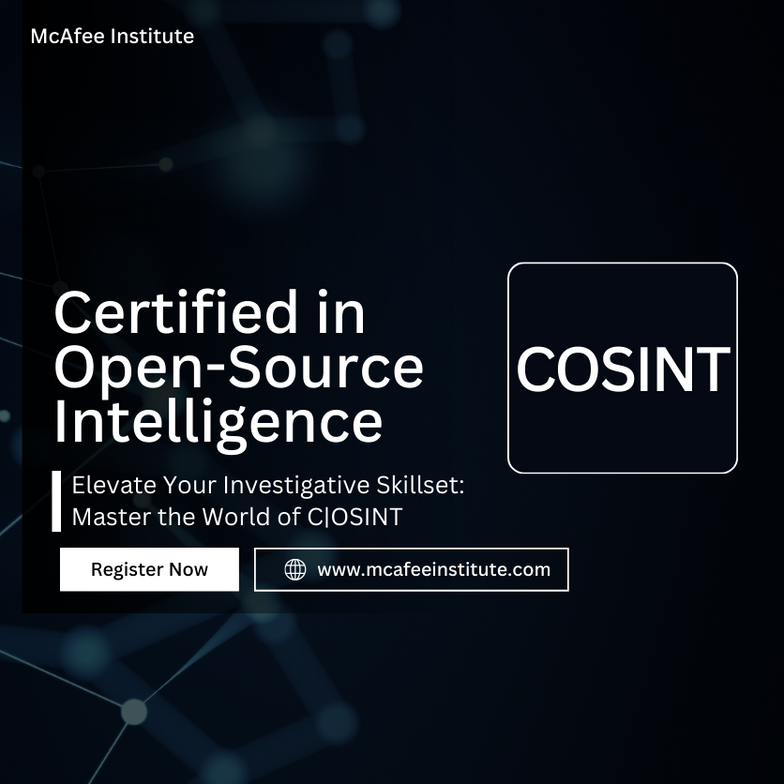Open Source Intelligence, or OSINT, is a powerful tool in today's digital world. It involves collecting and analyzing publicly available data. This data can be found on the internet, social media, and other open platforms.
OSINT is crucial for cybersecurity. It helps identify threats and assess risks. By understanding OSINT, you can enhance your security strategies.
The use of OSINT is not limited to cybersecurity. It is also valuable in law enforcement, journalism, and corporate security. OSINT techniques can uncover hidden connections and relationships in data.
Various tools and techniques are used in OSINT. These include web scraping, social media monitoring, and data mining. Both free and paid tools are available, each with unique capabilities.
Popular OSINT tools include Maltego, Shodan, and theHarvester. These tools help gather and analyze data efficiently. They are essential for effective threat detection and data analysis.
OSINT is a cost-effective approach to intelligence gathering. It provides valuable insights for decision-making. Understanding OSINT is key to staying ahead in the digital age.
Ethical considerations are important in OSINT. Compliance with legal standards is crucial. This ensures responsible and effective use of open source intelligence.
What Does OSINT Mean? The Basics of Open Source Intelligence
Open Source Intelligence, abbreviated as OSINT, refers to gathering information from publicly accessible sources. It involves analyzing data that is legally available to anyone. This data can be found on websites, social media, and public records.
The core of OSINT is its accessibility. Unlike classified intelligence, OSINT uses open and unclassified sources. These sources are free for individuals or organizations to explore. It is a transparent method of collecting information.
OSINT can be applied in various fields. Its uses range from cybersecurity and law enforcement to corporate security and journalism. OSINT provides insights that help in making informed decisions and strategies.
Several methods are used in OSINT. Some of the common techniques include:
- Web scraping for information extraction.
- Monitoring social media platforms.
- Data mining from online databases.
- Analyzing public records and documents.
The vastness of available data today makes OSINT invaluable. With the internet continually expanding, new data is generated every minute. This continuous flow of information enhances OSINT's potential and relevance.
However, analyzing such a massive amount of data requires specialized tools. OSINT tools help sift through data efficiently. This makes it possible to extract meaningful insights in a timely manner.
Ethically, OSINT must respect privacy laws and guidelines. Users must ensure they are compliant with legal standards. This ensures that intelligence gathering remains ethical and within the law's boundaries.
The Evolution and Importance of OSINT in Cyber Security
OSINT has come a long way since its inception. Initially, it was used primarily by governments. However, as digital landscapes evolved, its adoption spread across sectors. This evolution was driven by the exponential growth of internet users and data production.
In the realm of cybersecurity, OSINT plays a crucial role. It offers valuable insights into potential threats. Cybersecurity professionals utilize OSINT to anticipate risks and protect digital assets. This information is vital for formulating defensive strategies.
One of the key aspects of OSINT is its adaptability. As cyber threats become more sophisticated, OSINT methodologies have evolved as well. Whether monitoring hacker forums or analyzing software vulnerabilities, OSINT provides a proactive approach to defense.
Key Contributions of OSINT in Cybersecurity:
- Identifying security vulnerabilities.
- Monitoring potential threat actors.
- Assessing risks associated with data breaches.
- Gathering intelligence on malicious trends.
With its ability to preempt cyber threats, OSINT enhances risk management significantly. Organizations depend on it to maintain their security posture. Effective use of OSINT can result in early detection and prevention, reducing damage from cyber incidents.
The importance of OSINT is seen in various cybersecurity frameworks. Many standards integrate OSINT processes within their protocols. Its inclusion emphasizes continuous monitoring and vigilance, which are indispensable in today's digital age.
As OSINT continues to grow, collaboration between sectors is increasing. Cooperation among industries can further improve security measures. By sharing intelligence, organizations can learn from each other and strengthen collective defenses.
Despite the promise that OSINT holds, challenges such as data overload remain. Filtering relevant intelligence from the massive amounts of available data is crucial. Nonetheless, advancements in tools and techniques are ongoing to address these challenges.
OSINT in Practice: Real-World Examples and Use Cases
OSINT's practical applications are diverse and far-reaching. In law enforcement, it aids in criminal investigations. Authorities use it to track suspects and uncover illegal activities. The public availability of data makes gathering actionable intelligence easier.
Journalists also rely on OSINT for their investigative reporting. They can verify facts and uncover stories that might otherwise remain hidden. The ability to access a wide range of open sources enhances their research capabilities.
Notable Use Cases in Various Sectors:
- Corporate Security: Monitoring brand reputation and detecting insider threats.
- Market Analysis: Understanding competitor strategies and consumer trends.
OSINT is instrumental in human rights advocacy, too. Organizations utilize it to document violations and hold perpetrators accountable. Publicly available resources help to ensure transparency and fairness in reporting.
In cybersecurity, OSINT provides foresight into imminent threats. Companies can anticipate and thwart potential attacks before they occur. This preemptive approach is crucial in today's fast-paced digital world.
OSINT's Role in Cybersecurity:
- Threat Intelligence: Identifying ongoing or emerging cyber threats.
- Risk Assessment: Evaluating system vulnerabilities through open data.
Intelligence agencies incorporate OSINT into their surveillance operations. They analyze patterns and predict geopolitical developments. This intelligence informs decisions on national security policies and international relations.
Educational institutions benefit from OSINT by conducting academic research. Scholars gather extensive data to support their studies and publications. The collaborative potential of open source information fosters academic growth.
While OSINT offers considerable benefits, it must be handled responsibly. Balancing transparency with privacy is critical. Practitioners need to adhere to ethical guidelines and legal standards.
In summary, OSINT's versatility is evident across multiple domains. Its real-world applications underscore its value in decision-making and strategy development. Understanding these examples highlights the importance of embracing OSINT in various fields.
OSINT Sources: Where Does Open Source Information Come From?
Understanding OSINT requires knowing where its data originates. The sources of open source intelligence are as diverse as they are numerous. They include everything from social media platforms to academic publications.
Social media is a wellspring of information. Individuals willingly share their thoughts, activities, and connections. This data is invaluable for tracking trends and understanding public sentiment.
Government publications are another rich source. These documents often contain policy statements and statistical data. Many are accessible through government websites or public archives.
Common OSINT Sources:
- Online Forums: Discussion boards and community-driven spaces.
- News Websites: Up-to-date reporting on global and local events.
OSINT also taps into commercial databases. Companies maintain extensive records for marketing and demographic analysis. Accessing such data can offer insights into market dynamics and consumer behavior.
Academic journals provide detailed analyses and findings. Researchers publish their work for peer review, making it accessible for educational purposes. This wealth of information is crucial for scholars and professionals alike.
Less Typical Sources Include:
- Podcasts: Audio discussions offering expert views and personal stories.
- Blogs: Personal websites sharing opinions, reviews, and niche information.
OSINT practitioners must evaluate the credibility of these sources. Not all information is created equal, and reliability varies. Cross-referencing multiple sources ensures accuracy and builds a comprehensive picture.
The internet is an ever-expanding repository of data. Websites, databases, and digital archives contribute massively to OSINT efforts. Each piece of data is a potential link to a larger intelligence narrative.
Using these sources ethically is critical. Proper attribution and respect for privacy rights must be maintained. This mindful approach helps maintain trust in the use of open source intelligence.
In essence, OSINT is fueled by the vast array of publicly accessible information. Knowing where to find quality data is a skill all OSINT professionals should hone. Mastering this skill enhances the effectiveness and scope of intelligence gathering.
OSINT Techniques: Methods for Gathering and Analyzing Data
OSINT techniques are vital to transform scattered data into meaningful insights. These methods include a mix of digital savvy and analytical prowess. At its core, OSINT involves gathering data, verifying it, and interpreting its significance.
Data mining is a primary technique. It involves collecting vast amounts of information from various online resources. This process can uncover patterns that aren't immediately obvious.
Web scraping is another essential method. It involves using scripts or tools to extract data from websites. This data could be anything from contact details to user comments.
Popular OSINT Techniques:
- Social Media Monitoring: Tracking posts, hashtags, and user interactions.
- Geo-Location Analysis: Using digital footprints to determine locations.
Social media monitoring is a dynamic technique. Analysts track conversations across platforms to identify emerging trends. This helps businesses and security agencies stay ahead of the curve.
Data visualization tools turn raw data into visual insights. Graphs and maps provide clearer representations of complex datasets. This makes understanding patterns and relationships more intuitive.
Additional Techniques Include:
- Network Analysis: Mapping connections between individuals or organizations.
- Sentiment Analysis: Analyzing emotional tones within text data.
Sentiment analysis sheds light on public mood and opinions. Businesses use this to adjust marketing strategies. Security agencies might analyze it to predict societal shifts or unrest.
OSINT involves the use of automation for efficiency. Scripts and bots help automate repetitive tasks, saving time and reducing error. This allows analysts to focus on higher-level intelligence work.
The ethical application of these techniques is critical. Analysts must respect privacy norms and comply with legal frameworks. This ensures the responsible use of open source intelligence.
With technology advancing rapidly, OSINT techniques continually evolve. Staying updated on the latest methods enhances intelligence capabilities. Mastery of these techniques turns data into actionable intelligence.
OSINT Tools: Free, Paid, and Virtual Solutions
OSINT tools are essential for efficiently gathering and analyzing open source intelligence. They range from free options for beginners to advanced paid solutions for professionals.
Free OSINT tools provide a cost-effective way to start. These tools often have a limited scope but offer valuable functionalities for general needs.
Paid tools, on the other hand, offer comprehensive features. They are suitable for organizations needing in-depth analysis and broad data access.
Categories of OSINT Tools:
- Search and Data Collection Tools: These include web crawlers and data aggregators.
- Analysis and Visualization Tools: They help interpret data patterns and insights.
Some tools operate virtually, allowing remote access. This feature is critical for international teams needing constant connectivity.
Virtual solutions facilitate collaboration across locations. Analysts can share findings and insights in real-time, enhancing teamwork.
Popular OSINT Tools:
- Maltego: Known for transforming data into easy-to-understand graphs.
- Shodan: Focused on searching and analyzing internet-connected devices.
Combining different tools optimizes intelligence gathering. This approach leverages each tool’s strengths, providing a more robust analysis.
The best OSINT tools continuously update with new features. Staying abreast of these updates ensures you have a technological edge.
Best OSINT Tools and Websites
Choosing the right OSINT tools can significantly impact intelligence activities. Many tools provide specialized capabilities, making them ideal for specific tasks.
Understanding which tools are most effective requires exploration. Some tools excel in specific domains while others offer broader utility.
Notable OSINT Tools:
- theHarvester: Excellent for collecting data related to emails and domains.
- SpiderFoot: Automates data collection across multiple sources.
OSINT websites, like OSINT Framework, guide users to useful resources. These sites categorize tools and techniques, making exploration easier.
Other valuable websites include Bellingcat, known for its open source investigations. It shares case studies and methodologies beneficial for analysts.
The best tools integrate advanced features like machine learning and AI. These functionalities enhance data processing and pattern recognition.
Combining these tools with websites provides comprehensive intelligence capabilities. Users have access to both technology and community-driven resources.
Intelligence X and Alternatives
Intelligence X is an advanced OSINT tool specializing in data archiving. It allows users to search for data across multiple content types.
This tool offers a unique approach to intelligence gathering. It archives sources, making historical data analysis possible.
Alternative Tools Include:
- Hunchly: A browser extension that helps capture and organize online investigations.
- Recon-ng: A web-based reconnaissance framework effective for data gathering.
Alternatives to Intelligence X offer varied features. Exploring these options ensures you find the right fit for your intelligence needs.
Choosing the right tool depends on your specific requirements. Balancing functionality with cost and ease of use is crucial.
The OSINT Framework: Structure and Alternatives
The OSINT Framework is a valuable resource for organizing open source intelligence efforts. It provides a structured approach to gathering and analyzing information from public sources. This framework is popular among cybersecurity professionals, researchers, and investigators.
By categorizing various OSINT tools and techniques, the framework aids users in focusing their efforts effectively. It groups tools into categories like social media, email, and domain research. This categorization helps users identify which tools to use for specific intelligence tasks.
Key Features of the OSINT Framework:
- Categorization by Use Case: Clearly defined tool categories for easy navigation.
- Integration Capabilities: Compatible with multiple OSINT tools and methods.
- Continuous Updates: Regular updates ensure users have access to the latest resources.
Using the OSINT Framework streamlines the intelligence-gathering process. Its organized layout reduces the time spent searching for appropriate tools, enhancing efficiency.
For those seeking alternatives, options like Recon-ng and OpenCTI offer similar functionalities. These alternatives provide unique features that may better suit specific needs.
Recon-ng is notable for its command-line interface, offering flexibility and power for experienced users. Meanwhile, OpenCTI focuses on threat intelligence, providing in-depth analysis tools.
Exploring alternatives ensures that users are not limited to one approach or toolset. Each framework or solution offers distinct advantages and may suit different intelligence missions.
In conclusion, the OSINT Framework and its alternatives provide essential structures for organizing open source intelligence efforts. By leveraging these resources, professionals can enhance their capabilities and achieve more comprehensive analyses.
OSINT in Cyber Security: Applications and Benefits
OSINT is a cornerstone of modern cybersecurity strategies. It involves the collection and analysis of publicly available data to identify potential threats and vulnerabilities. This proactive approach helps organizations stay ahead of cybercriminals.
Incorporating OSINT into cybersecurity allows for the anticipation of attacks before they happen. By monitoring threat sources, security teams can detect patterns and predict malicious activity. This capability is essential for mitigating risks.
Key Applications of OSINT in Cyber Security:
- Threat Intelligence: Gathering information on emerging threats and actors.
- Risk Assessment: Evaluating the potential impact of cyber incidents.
- Vulnerability Detection: Identifying weaknesses in systems before they are exploited.
OSINT is also beneficial for incident response. By providing context to cyber incidents, it aids in a faster and more effective response. This quick insight reduces the damage and shortens recovery times.
Moreover, OSINT enhances the decision-making process in cybersecurity strategies. With comprehensive information, organizations can prioritize resources and address the most pressing threats. This strategic advantage is invaluable in a fast-changing environment.
Finally, OSINT enables continuous security improvement. By analyzing past incidents and threats, cybersecurity teams can refine their practices. This ongoing refinement ensures better protection against future attacks.
In summary, integrating OSINT into cybersecurity provides numerous benefits. From improving threat intelligence to refining incident responses, it offers a robust foundation for protecting digital assets.
Ethical and Legal Considerations in OSINT
As beneficial as OSINT is, it demands strict adherence to ethical and legal guidelines. The use of publicly available data does not exempt practitioners from potential pitfalls. Ethical boundaries must always be maintained.
Firstly, respecting privacy is paramount. OSINT should never involve unauthorized intrusion into private spaces or data. Even publicly accessible information should be handled with care, considering the individual’s right to privacy.
Legal considerations are equally crucial. OSINT practitioners must comply with all relevant laws and regulations. This includes data protection laws, which vary by jurisdiction and require careful navigation to avoid legal issues.
Key Ethical and Legal Considerations:
- Privacy: Always prioritize individuals' privacy rights.
- Compliance: Abide by local and international laws.
- Transparency: Clearly communicate OSINT activities and intentions.
Conducting OSINT ethically also involves transparency. Communicating the purpose and scope of data collection builds trust. It ensures stakeholders understand the intentions behind gathering and analyzing information.
While OSINT can be a powerful tool, misuse can lead to serious consequences. Ethical lapses not only undermine trust but can also result in significant legal repercussions. Ethical OSINT practices safeguard against such risks.
In conclusion, balancing effectiveness with ethical considerations is vital in OSINT operations. Practitioners must be vigilant in upholding ethical standards and compliance to maintain integrity and trust in their findings.
Challenges and Limitations of OSINT
While OSINT offers immense potential, it is not without its challenges. The overwhelming volume of available information can be a double-edged sword, leading to data overload and analysis paralysis.
Data accuracy is another concern. Publicly available information can be misleading or false, and distinguishing fact from fiction requires skill. OSINT practitioners must ensure data verification and cross-checking to maintain integrity in their analysis.
Common Challenges in OSINT:
- Data Overload: Managing and filtering vast amounts of data.
- Accuracy: Verifying and validating information sources.
- Timeliness: Keeping pace with rapidly changing information.
Moreover, the timeliness of data is critical in OSINT operations. With information changing at a rapid pace, keeping analyses relevant and up-to-date can be demanding. Timely updates and monitoring are essential to maintain the usefulness of intelligence gathered.
In summary, while OSINT is a valuable tool, it comes with specific limitations. Navigating these challenges effectively is crucial for leveraging OSINT's full potential. Efficient techniques and systematic processes help minimize these obstacles, ensuring accurate and actionable insights.
The Future of OSINT: Trends and Innovations
The future of OSINT is a landscape filled with opportunities and advancements. As technology progresses, OSINT techniques and tools evolve to match emerging threats. These innovations promise to enhance intelligence gathering, processing, and application.
Automation is a key trend shaping the future of OSINT. Automating data collection and analysis increases efficiency, allowing practitioners to focus on interpreting results. Machine learning and AI continue to play significant roles, offering predictive analytics and sophisticated data insights.
Future OSINT Trends:
- Automation: Streamlines data collection processes.
- AI and Machine Learning: Enhance predictive capabilities.
- Improved Data Visualization: Makes analysis more intuitive.
Improved data visualization is another promising development. Enhanced visualization tools will make data interpretation more intuitive and accessible. This will help organizations quickly grasp and act upon complex intelligence findings.
As OSINT continues to innovate, staying informed about these trends is essential. Embracing these changes ensures that organizations can effectively navigate the evolving digital intelligence landscape. This readiness positions them to harness the power of OSINT in the future.
Getting Started with OSINT: Tips and Best Practices
Embarking on your OSINT journey requires a strategic approach and thoughtful planning. Familiarize yourself with the basics of OSINT, including its principles, tools, and techniques. This foundational understanding will guide your exploration and application of open source intelligence.
When starting, it's crucial to select the right tools that align with your goals. Free tools can offer an effective entry point, providing essential functionalities for beginners. As you advance, consider incorporating more sophisticated software to enhance your data-gathering capabilities.
Best Practices for OSINT Beginners:
- Understand Legal Boundaries: Always ensure compliance with laws.
- Stay Updated: Keep abreast of new tools and trends.
- Start Small: Focus on mastering core techniques.
As you dive deeper, remember that OSINT is a continually evolving field. Staying current with emerging trends and innovations is key to maintaining effectiveness. By adopting these best practices, you can successfully leverage OSINT to gain valuable insights and strengthen decision-making processes.
Conclusion: Why Understanding OSINT Matters
Grasping the intricacies of OSINT is vital in today’s digital world. This discipline allows organizations and individuals to gain actionable insights from publicly available information. Whether it's enhancing cybersecurity or supporting law enforcement, OSINT's applications are vast and invaluable.
Understanding OSINT empowers you to make informed decisions by leveraging its vast resources. You can identify potential threats, monitor competitor activities, and protect sensitive information. By utilizing OSINT effectively, you contribute to building a safer, more informed environment.
In an era where information is abundant, mastering OSINT provides a strategic advantage. It is crucial for enhancing security measures and fostering proactive responses. Recognizing the importance of OSINT not only equips you with essential skills but also ensures you are prepared for the challenges of the digital age.













Share:
Five high-value OSINT techniques (with AI) investigators probably haven’t thought of — and how to use them ethically